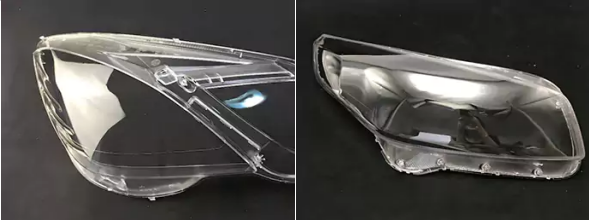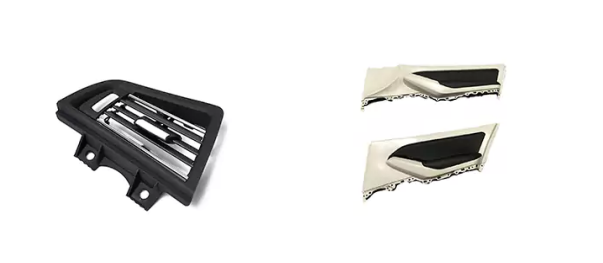Blog
We regularly update articles related to the prototyping and manufacturing industry. You’re welcome to check our previous blogs and subscribe to our newsletter.
Overview: What is turning and milling composite machining?
What is turning and milling composite machining?
Turning and milling composite machining are two essential manufacturing processes used to shape, refine, and finish composite materials, which are engineered combinations of two or more distinct materials with the goal of achieving enhanced mechanical, thermal, or other properties. These advanced materials find extensive applications across industries such as aerospace, automotive, marine, and sporting goods due to their lightweight, high strength, and corrosion-resistant characteristics. The processes of turning and milling play a crucial role in the precise fabrication of complex composite components while preserving their structural integrity.
Turning Composite Machining:
A workpiece is rotated during the flexible machining operation known as turning while material is being removed by a cutting tool to produce the required form. Turning is the precise removal of extra material from a composite workpiece using a lathe in the field of composite materials. The cutting tool can make precise cuts and shape the composite as needed since the lathe secures the workpiece and spins it at a regulated speed.
- Due to the anisotropic structure of composites, turning composite materials creates particular difficulties. Composites are made up of fibers embedded in a matrix substance, unlike homogenous metals. The integrity of the material must be protected during the machining process to protect the fibers that give the composite its extraordinary strength.
- Therefore, choosing the right cutting tools becomes crucial. Utilizing specialized cutting tools with polycrystalline diamond (PCD) or other cutting-edge coatings is common. With the use of these instruments, there is less chance that the composite structure will suffer from delamination (the separation of layers), fibre pullout, or other types of harm.
- It’s crucial to achieve a high-quality surface finish, especially for aerospace applications where smooth surfaces are essential for aerodynamic performance. To avoid fibre damage and guarantee the correct surface smoothness, cutting parameters including feed rate, cutting speed, and depth of cut are rigorously optimized. The proper execution of turning composite machining depends on the machinists’ and engineers’ knowledge in choosing the appropriate tools and settings.
Milling composite machining:
Another crucial machining technique is milling, which use spinning cutting tools to remove material from a workpiece. When dealing with composite materials, milling is done using a milling machine that has cutting tools made specifically for use with composites. The method is adaptable and may produce a variety of forms, pockets, and curves with excellent accuracy.
- Similar to turning, careful consideration of the material’s characteristics is necessary when milling composite materials to avoid damage. To reduce heat generation and fibre damage, it’s important to use the right cutting tools, frequently with carefully designed geometries and coatings. The objective is to guarantee that after machining, the composite material still has its structural qualities.
- By using cutting-edge methods, the milling of composite materials may be improved even more. Adaptive machining is one such method, where sensors and monitoring devices offer real-time input on vibrations, temperatures, and cutting pressures. With the use of this information, the machining system can modify settings instantly, streamlining the procedure and reducing the chance of fibre damage.
- The skills of machinists are essential for composite turning and milling machining. For successful machining, it is essential to comprehend the unique qualities of composite materials, such as fibre orientation, matrix properties, and possible flaws. To guarantee that the final composite components satisfy exacting design requirements, a thorough grasp of machining principles, tool materials, and cutting mechanics is also necessary.
While these procedures present chances to form lightweight and strong materials, they also need a thorough comprehension of machining principles and composite behavior. Manufacturers may use the potential of turning and milling to produce composite components that satisfy the rigorous standards of contemporary industries by carefully choosing cutting tools, optimizing cutting settings, and using advanced monitoring systems.

Advantages of turning and milling composite machining:
Turning and milling composite machining operations are essential steps in the production of composite materials because they provide a number of benefits. These benefits enhance the final composite components’ accuracy, effectiveness, and quality. The following are some significant benefits of turning and milling composite materials and what is turning and milling composite machining:
Precision and Dimensional Control:
Milling and turning operations provide composite parts’ dimensions and tolerances superb control. These procedures give manufacturers the ability to produce sophisticated geometries and tight tolerances, guaranteeing that the finished products adhere to exact design requirements. This degree of accuracy is especially important in fields like aerospace, where even little variations might affect total performance.
Versatility in Component Design:
Milling and turning both give a great deal of flexibility when it comes to designing composite materials. They may be used to produce a broad range of intricate curves, features, and forms. Engineers may create composite components with optimized designs that maximize strength while reducing material waste thanks to this adaptability.
Surface Finish Quality:
High-quality surface finishes may be produced on composite components using turning and milling operations. This is crucial in situations where smooth surfaces are required for aesthetic purposes, aerodynamic efficiency, or friction reduction. In fields like aerospace and automotive, where performance and aesthetics are closely related, achieving a great surface quality is essential.
Efficiency of Material Removal:
Although the anisotropic structure of composites presents difficulties, turning and milling techniques may effectively remove extra material. These procedures can minimize material waste while delivering precise and reliable outcomes when they are optimized.
Cost-Effectiveness:
Cost-effective options for shaping composite materials include turning and milling composite machining. While these procedures need specialized equipment and knowledge, they may create complicated parts more quickly than certain other manufacturing methods. Additionally, the requirement for extra post-machining procedures is decreased by the ability to attain accurate dimensions and tolerances.
- Customization and prototyping:
We may swiftly produce customized or prototype components using turning and milling. In the early stages of product development, this is especially helpful since it enables engineers to iterate designs and assess performance prior to committing to full-scale manufacturing.
- Consistency and Reproducibility:
Properly managed turning and milling operations may produce outcomes that are reliable and repeatable throughout a variety of manufacturing runs. In particular in safety-critical applications, this predictability is essential for preserving the integrity and performance of composite components.

Conclusion:
What is turning and milling composite machining? It is described in above information. In the world of manufacturing, the combination of turning and milling techniques has long been recognized as a powerful duo. However, when it comes to working with composite materials, this duo becomes even more essential. Composite materials, made up of two or more different components, offer unique properties such as high strength-to-weight ratio and corrosion resistance. Because of the tight quality control system that LOUIS MACHINE has built, our goods’ quality can be tracked and has withstood the test of time. Our quality and technology will satisfy all of your demands. Our corporate philosophy’s core concept of integrity was something we upheld.





